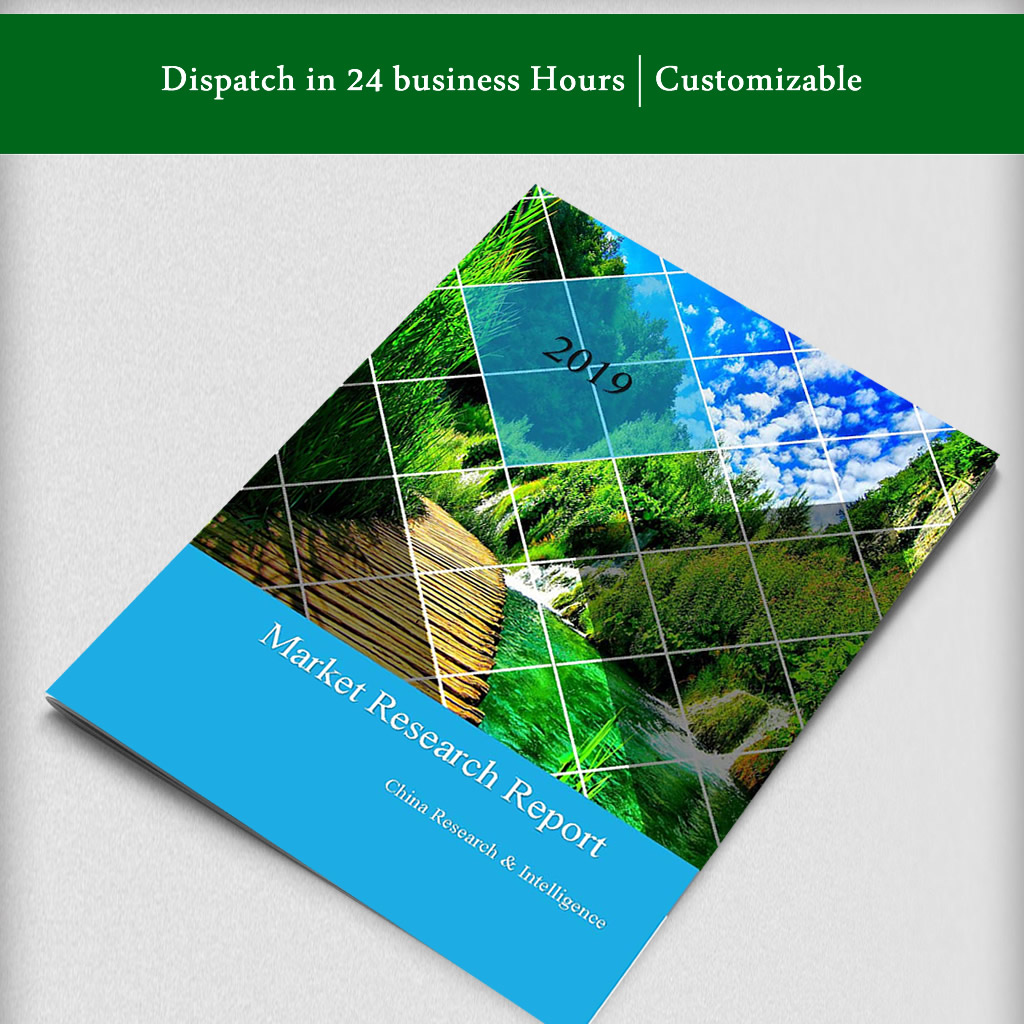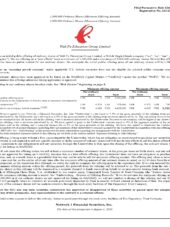Global 3D Cell Culture Market (2018-2023)
$2950
Description
Limitations of the two-dimensional (2D) cell culture models have led to the adoption of the three-dimensional (3D) cell culture in various biological research activities. Compared to the 2D methods, 3D cell culture allows cells to grow in a 3D surrounding that mimics the typical organ microarchitecture. In a 3D environment, cells tend to be exposed to better morphological and physiological changes, contrary to those grown in a 2D environment. Thus, the advantages offered by 3D cell culture in comparison to the 2D ones are key growth drivers for the market. The 3D cell culture market is expected to reach approximately USD 5.33 Bn by 2023, expanding at a compound annual growth rate (CAGR) of 29.2% during the 2018-2023 period.
Product type segment insights:
The scaffold-based 3D cell culture product segment is dominating the market and will continue to do so during the forecast period. This variant will occupy a market share of 36.6% among all the other product types by 2023. This high share is mainly attributed to the ability of scaffold-based products to impersonate in vivo conditions for the cell culture, thereby driving their adoption among researchers.
Application segment insights:
Depending on applications, the 3D cell culture market is segmented into drug discovery and toxicology, cancer research, and stem cell research/regenerative medicine. The cancer research sub-segment held the largest market share of about 42.8% in the year 2017. This is mainly attributed to the advantages offered by 3D cell culture over its 2D counterpart, growing number of cancer related researches, and funding initiatives across the globe. 3D cultures of cancer cells can generate new drug candidates for a researcher before moving to expensive and time-consuming animal models. 3D cell culture can speed discovery and save money involved in developing cancer models for preclinical screening and testing, as well as for the research and development (R&D) of new therapies.
End users segment insights:
3D cell culture is used across multiple end user segments, such as biotechnology and pharmaceutical companies, contract research laboratories, and academic institutes. Among these, the biotechnology and pharmaceutical companies dominated the market with a revenue of USD 0.77 Bn and 67% market share in 2017. This is primarily due to rising adoption of 3D cell culture as a new tool in early drug discovery, as well as potential treatment of diseases. Furthermore, rising need to continuously improve the productivity of pharmaceutical R&D is further accelerating implementation of 3D cell cultures in the early discovery of drugs.
Regional insights:
Based on regions, North America held the largest market share of about 41.8% of the global 3D cell culture market in the year 2017. This is because of a large number of ongoing research activities in this region, coupled with the availability of sufficient funding for research institutes to opt for relatively costlier technique such as 3D cell culture methods. The countries of the Asia-Pacific region will grow at the highest CAGR in the forecast period owing to rising number of contract research activities, growing focus of pharmaceutical and biotechnological companies on this region for their R&D activities, and increasing awareness among researchers about the benefits of 3D cell culture over 2D methods.
Companies covered:
1. Thermo Fisher Scientific
2. Corning Inc.
3. Lonza Group
4. Merck & Co.
5. InSphero AG
6. Hamilton
7. Kuraray
8. Emulate
9. Mimetas
10. Global Cell Solutions Inc.
Customizations available
Table of Contents
Chapter 1. Executive summary
1.1. Market scope and segmentation
1.2. Key questions answered
1.3. Executive summary
Chapter 2. Global 3D cell culture market – overview
2.1. Global market overview - historical (2015-2017) and forecasted (2018-2023) market size (USD Bn), geography-wise market revenue (USD Bn), and market attractiveness analysis
2.2. Global market drivers
2.3. Global market trends
2.4. Global market challenges
2.5. Porter's five forces analysis
2.6. Market segmentation based on product types (scaffold-based, hydrogels/ECM analogs, micropatterned surfaces/microchips, scaffold-free, 3D bioreactors, and others) - historical (2015-2017) and forecasted (2018-2023) market size (USD Bn), and key market observations
2.7. Market segmentation based on applications (drug discovery and toxicology, cancer research, and stem cell research/regenerative medicine) - historical (2015-2017) and forecasted (2018-2023) market size (USD Bn), and key market observations
2.8. Market segmentation based on end user industry (biotechnology and pharmaceutical companies, contract research laboratories, and academic institutes) - historical (2015-2017) and forecasted (2018-2023) market size (USD Bn), and key market observations
Chapter 3. North America 3D cell culture market
3.1. Regional market overview - historical (2015-2017) and forecasted (2018-2023) market size (USD Bn), and key market observations
3.2. Market segmentation based on product types (scaffold-based, hydrogels/ECM analogs, micropatterned surfaces/microchips, scaffold-free, 3D bioreactors, and others) - historical (2015-2017) and forecasted (2018-2023) market size (USD Bn), and key market observations
3.3. Market segmentation based on applications (drug discovery and toxicology, cancer research, and stem cell research/regenerative medicine) - historical (2015-2017) and forecasted (2018-2023) market size (USD Bn), and key market observations
3.4. Market segmentation based on end user industry (biotechnology and pharmaceutical companies, contract research laboratories, and academic institutes) - historical (2015-2017) and forecasted (2018-2023) market size (USD Bn), and key market observations
Chapter 4. Europe 3D cell culture market
4.1. Regional market overview - historical (2015-2017) and forecasted (2018-2023) market size (USD Bn), and key market observations
4.2. Market segmentation based on product types (scaffold-based, hydrogels/ECM analogs, micropatterned surfaces/microchips, scaffold-free, 3D bioreactors, and others) - historical (2015-2017) and forecasted (2018-2023) market size (USD Bn), and key market observations
4.3. Market segmentation based on applications (drug discovery and toxicology, cancer research, and stem cell research/regenerative medicine) - historical (2015-2017) and forecasted (2018-2023) market size (USD Bn), and key market observations
4.4. Market segmentation based on end user industry (biotechnology and pharmaceutical companies, contract research laboratories, and academic institutes) - historical (2015-2017) and forecasted (2018-2023) market size (USD Bn), and key market observations
Chapter 5. Asia-Pacific 3D cell culture market
5.1. Regional market overview - historical (2015-2017) and forecasted (2018-2023) market size (USD Bn), and key market observations
5.2. Market segmentation based on product types (scaffold-based, hydrogels/ECM analogs, micropatterned surfaces/microchips, scaffold-free, 3D bioreactors, and others) - historical (2015-2017) and forecasted (2018-2023) market size (USD Bn), and key market observations
5.3. Market segmentation based on applications (drug discovery and toxicology, cancer research, and stem cell research/regenerative medicine) - historical (2015-2017) and forecasted (2018-2023) market size (USD Bn), and key market observations
5.4. Market segmentation based on end user industry (biotechnology and pharmaceutical companies, contract research laboratories, and academic institutes) - historical (2015-2017) and forecasted (2018-2023) market size (USD Bn), and key market observations
Chapter 6. Rest of world (ROW) 3D cell culture market
6.1. Regional market overview - historical (2015-2017) and forecasted (2018-2023) market size (USD Bn), and key market observations
6.2. Market segmentation based on product types (scaffold-based, hydrogels/ECM analogs, micropatterned surfaces/microchips, scaffold-free, 3D bioreactors, and others) - historical (2015-2017) and forecasted (2018-2023) market size (USD Bn), and key market observations
6.3. Market segmentation based on applications (drug discovery and toxicology, cancer research, and stem cell research/regenerative medicine) - historical (2015-2017) and forecasted (2018-2023) market size (USD Bn), and key market observations
6.4. Market segmentation based on end user industry (biotechnology and pharmaceutical companies, contract research laboratories, and academic institutes) - historical (2015-2017) and forecasted (2018-2023) market size (USD Bn), and key market observations
Chapter 7. Competitive landscape
7.1. Thermo Fisher Scientific
7.1.a. Company snapshot
7.1.b. Product offerings
7.1.c. Growth strategies
7.1.d. Initiatives
7.1.e. Geographical presence
7.1.f. Key numbers
Note: Similar information areas will be covered for the remaining competitors
7.2. Corning Inc.
7.3. Lonza Group
7.4. Merck & Co.
7.5. InSphero AG
7.6. Hamilton
7.7. Kuraray
7.8. Emulate
7.9. Mimetas
7.10. Global Cell Solutions Inc.
Chapter 8. Conclusion
8.1. Future outlook
Appendix
1. List of tables
2. Research methodology
3. Assumptions
4. About Netscribes Inc.



